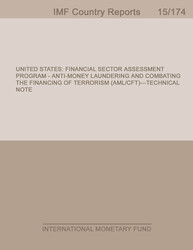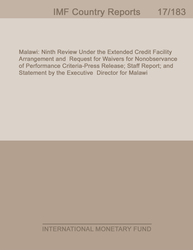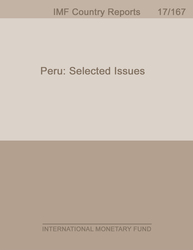
United States: Financial Sector Assessment Program-Anti-Money Laundering And Combating The Financing Of Terrorism (Aml/Cft)-Technical Notes
EXECUTIVE SUMMARY1This note sets out the findings and recommendations made in the Financial Sector Assessment Program (FSAP) for the United States in the areas of anti-money laundering and combating the financing of terrorism (AML/CFT). It summarizes the findings of a targeted review of measures to prevent U.S. legal persons and arrangements from being misused for money laundering (ML)/financing of terrorism (FT). This discussion is not, in any way, an evaluation or assessment of the U.S. AML/CFT system. The United States will undergo a complete mutual evaluation by the Financial Action Task Force (FATF) beginning June 1, 2015, the results of which will be made public in 2016.The last FATF assessment in 2006 found that the United States had implemented an AML/CFT system that was broadly in line with the international standard, although a significant shortcoming was identified. The United States had significantly strengthened its AML/CFT regime since the previous mutual evaluation, including through enhanced legislation. However, there was a notable shortcoming with respect to the Recommendation addressing customer due diligence (CDD) which is one of the FATF's core Recommendations. There were also other deficiencies regarding the availability of ownership information about corporations and trusts, and the requirements applicable to certain designated non-financial businesses and professions (DNFBPs).The U.S. AML/CFT legal and institutional framework has yet to address deficiencies identified in the most recent FATF mutual evaluation report (MER) regarding ownership information for U.S. corporations and trusts; in particular more rapid progress is needed to enhance transparency of legal persons to bolster financial system integrity. Trusts have a different legal and institutional framework. Draft regulations have been produced to strengthen financial institutions' (FIs) obligations to identify and verify the identity of beneficial owners and policy intentions announced to improve the authorities' access to information on the beneficial ownership (BO) and control of U.S. corporations. These measures—to address deficiencies identified in the last FATF MER of June 2006—are progressing slowly. However, in 2010 U.S. tax authorities began requiring information that includes some BO information from legal entities and trusts applying for an Employer Identification Number (EIN), which is required when they have income, employees, or are otherwise required to file any documents with the Internal Revenue Service (IRS) or open an account with an FI. Nonetheless, deficiencies remain, and even when completed, the intended changes may not completely address all of the deficiencies cited in the last FATF mutual evaluation report.The approach taken by law enforcement agencies (LEAs) to access BO information—relying largely on a wide range of investigative powers and techniques— while often successful cannot always ensure timely access to current BO information of all U.S. corporations. The1 This note was prepared by Ke Chen, Stephen Dawe, and Gianluca Esposito (all IMF's Legal Department).
Publication date: July 2015
ISBN: 9781513530147
$18.00
Add to Cart by clicking price of the language and format you'd like to purchase
Available Languages and Formats
| English |
Prices in red indicate formats that are not yet available but are forthcoming.
Topics covered in this book
This title contains information about the following subjects.
Click on a subject if you would like to see other titles with the same subjects.
Money and Monetary Policy , International - Economics , Public Policy ,
Also of interest
Summary
Copyright © 2010 - 2024
Powered by:
AIDC



